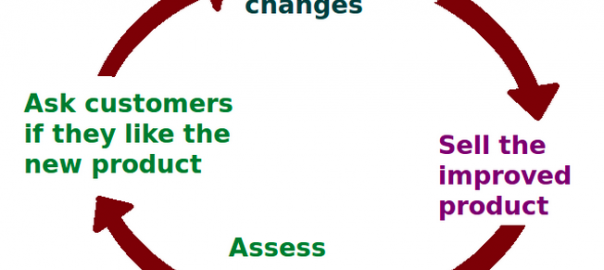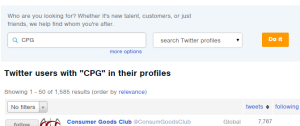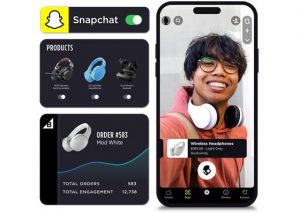With over 1.49 billion users, the fact that your customers are on social media should by now be a no-brainer. Given that reality, this post aims to give you a few pointers about how and why you should use social media to grow your business.
The first thing you should know is that social media has the lowest (measurable) return on investment (ROI) of any digital marketing channel. Organic search has a far greater conversion rate, and email–the old grandmammy everyone would like to relegate to the past–is still the winner when it comes to conversion.
So what’s the big deal? We’ve already said that your customers are on social. Businesses at the head of the pack won’t give up until they learn how to tame the beast, which will involve figuring out how and what works on social media to improve ROI.
The other big deal is that social media, whether its easily measurable or not, is great for building your brand in general and reaching out to the people who really matter–your customers and clients. In a world in which people see upwards of 3,000 to 20,000 images per day (Yankelvich Research), you want your brand to be visible–but not annoying.
In today’s world, the absence of pain can be pleasure. That’s why user experience, which is in my opinion one way to explain what customer service really is, is so important. So let’s talk about how social media, customer service (user experience), and marketing intersect.
Social Media For Customer Service
“Customer Service is the new marketing,” says Dan Gingriss, head of digital customer experience and social media, Discover Financial Services. Here are just some of data-backed reasons that brands should be motivated to explore the benefits of social media monitoring that make social customer service possible:
- 67% of consumers have used a company’s social media site for servicing (J.D. Power and Associates).
- 78% of active Twitter users are mobile; 81% for Facebook.
- 33% of users even prefer to contact brands using social media rather than the telephone (Nielsen).
- 71% of customers say that valuing their time is the most important thing a company can do to provide good service (Forrester).
- Failure to respond via social channels can lead to a 15% increase in the churn rate for existing customers (Gartner).
And, there’s another payoff, too: A Gartner study found that social agents are able to handle four to eight times as many issues per hour as a phone agent (Gartner 2012).
What It (Really) Takes to Manage Your Social Media

Image source: The Definitive Guide to Social Customer Service (Conversocial)
If you’re convinced that social customer service is a worthy goal, then roll up your sleeves. Doing social customer service requires a lot of work and planning. Depending on the size of your business, you will need to use paid or free tools and dedicate staffing to the effort.
Here are some tools to consider:
- High-end. Radian6 from Salesforce, Brandwatch, Spredfast.
- Freemium. HootSuite in combination with TalkWalker app (popular and free), Nimble (ROI of social analytics), Mention.
- Free. Google Alerts, HootSuite in combination with TalkWalker app.
Larger companies may also build proprietary software to do the job.
Social media monitoring (and responding) done right requires two to five (or teams of people) for 24-hour coverage. If your company (or budget) is smaller, aim for coverage Monday through Friday, 9 to 5 p.m.
Social media customer service, even with a large and dedicated staff, is easy to do incorrectly. For example, some companies try to move conversations off social media, which is inconvenient and disruptive for clients. Keys to success include meeting your customers where they are and doing whatever it takes to make their interactions with your brand positive and simple to navigate.
Remember: social media monitoring, although worthwhile, requires budget, talent, a dedicated team, and the will to get through the growing pains of building a program like this.
Social Media For Market Research

Social media for market research
Social media continues to change the face of market research. In case it isn’t totally obvious, researchers have more access to “study subjects” than ever before and, if anything, this fact of digital marketing life is likely to intensify. As a marketer, you can get huge amounts of information about competitors and customers. If you have the resources to pay for it, even more massive amounts of data are yours for the having. The options are endless, and proliferating, but here are a few with which you can get started:
- Benchmarking. The first thing you should do with your social media channels is benchmark. Find out where you are on your KPIs before you do anything else.
- Understanding Your Audience. Use social media to learn more about your audience–not just on your own profiles, but on successful competitor profiles as well.
- Competitive Analysis. Speaking of competitors, use your competitive analysis to help you benchmark and find out what works for your competitors. For my clients, I aim to produce work that is 10% better than their competitors.
- Real-Time Research. The minute you want to know something about your market, you can dip into Twitter, Facebook, LinkedIn, or any other social channel and start poking around.
- Industry Trends. Twitter, LinkedIn, and Google+ are all excellent for industry trends.
Use tools like BuzzSumo to find out what’s trending, who the influencers are in your industry, and which of your content gets the most engagement.
Social Media For Lead Generation
According to Kissmetrics, there are three paths to social media lead generation:
- Social channel > Blog post with link to a relevant landing page (gated content) > lead.
- Social channel > Gated content > lead.
- Social channel > Blog post > Visitor signs up for mailing list via signup forms strategically placed on your blog > lead.
In order to make the most of these three paths, you’ll need to consider analytics from the very beginning. Using Google Analytics, you can set up destination URLs to determine whether and how many people are performing the actions you want them to take. You can also create personalized links in Google Analytics to track referral traffic from social media. Google Analytics offers a lot for free so you can see what’s working and what’s not (more on this later), but, like monitoring itself, there are other paid and free options for measuring your social media analytics.
Once you understand your options for tracking and measuring your success, you’ll be ready to consider content. For each platform, check out which of your content is doing the best. This is where your market research (see above) will come in handy, along with your understanding of each specific channel. Check out your competitors and your industry, and then start creating site-specific content.
Remember: people go to Facebook to be entertained, Twitter to get the latest updates, LinkedIn to do industry research, Google+ to nerd out, Pinterest to shop, and Instagram for “chatting” with friends and sharing the best of their experiences. In other words, each channel has a distinct personality and it’s your job to find out how that personality intersections with your clients’ interests.
In order to avoid coming off as spammy, it’s important to link to other people and brand’s content as well. Use tools like Flipboard and BuzzSumo (see above) to find relevant, quality content in addition to using it for market research.
Social Media For Creating Brand Ambassadors

Social Media Brand Ambassadors
While it’s considered common knowledge that everyone loves to be loved, it’s less common knowledge that people love to love. You will find brand ambassadors (people who will share how much they enjoy your products, services, and customer care) by being responsive when people engage with your brand. Having the capacity to respond quickly to those who engage with your social media, just like social customer service, takes time, money, and sustained attention.
To be most effective you should select potential brand ambassadors from among those who have large and active social followings. That won’t be as difficult as you might think because the people who actively engage with your brand are likely to be social media hobbyists.
Once you’ve figured out who, you need to figure out how and what. You’ll need to decide what you would like your ambassadors to do and how often you would like them to do it. For example, you might ask your brand ambassadors to tweet your blog posts on a regular basis. In order to keep a relationship like this going, you’ll want to consider how to incentivize your ambassadors, which can be done by posting images of them or giving them rewards like brand tee-shirts or gift certificates for products.
You will also want to decide what, as a brand, a successful brand ambassador program will look like for you. Brand ambassadors can be effective in two ways: the first is that brand ambassadors cost very little money to maintain and the second is that word-of-mouth and peer reviews are a top way to generate leads. Using analytics, you’ll understand which types of content works best for your brand, and that will help you set your goals. Once you’ve set your goals, you’ll want to measure your success (see below).
Machine Learning

Leverage Big Data for Customer Success with Machine Learning
We’re not going to get into the details of machine learning here but it’s worth mentioning that the future of social media monitoring is a continuously increasing reliance on big data and automation. Machine learning mines big data, including social media data, to automate certain aspects of lead generation, product development, and customer service management. Check out companies like wise.io to find out more.
One point I think is important to consider is that automation, at this point, has not progressed to the point where it can replace human intervention. No matter how sophisticated our technology gets, it’s people who make people feel cared for.
From Managing to Measuring Social Media
Learning to manage your social media and measuring your social media are related, but separate, tasks that require separate skill sets and, often, separate staffing. To optimize your use of social media, consider the following:
- Have the right tools. There are many tools available to you, including free and paid versions of monitoring and analytics software. If you are brand with a big budget, paid tools will offer you enhanced functionality.
- Consider time & staffing. Truly effective social media monitoring and measuring requires an investment in time, money, and staffing.
- Be careful when trying to automate. Although automations are increasingly available and easier than ever to use, use them cautiously. At their best, automations enhance your efforts. They do not replace the human element because, at the end of the day, people are looking for connection to each other–not machines.
As the famous marketing truism says, it’s not marketing if it’s not measured. Most brands use analytics as an afterthought, not a point of departure. Don’t let that be you!
{photo credits: wikimedia}
Digital & Social Articles on Business 2 Community(38)






